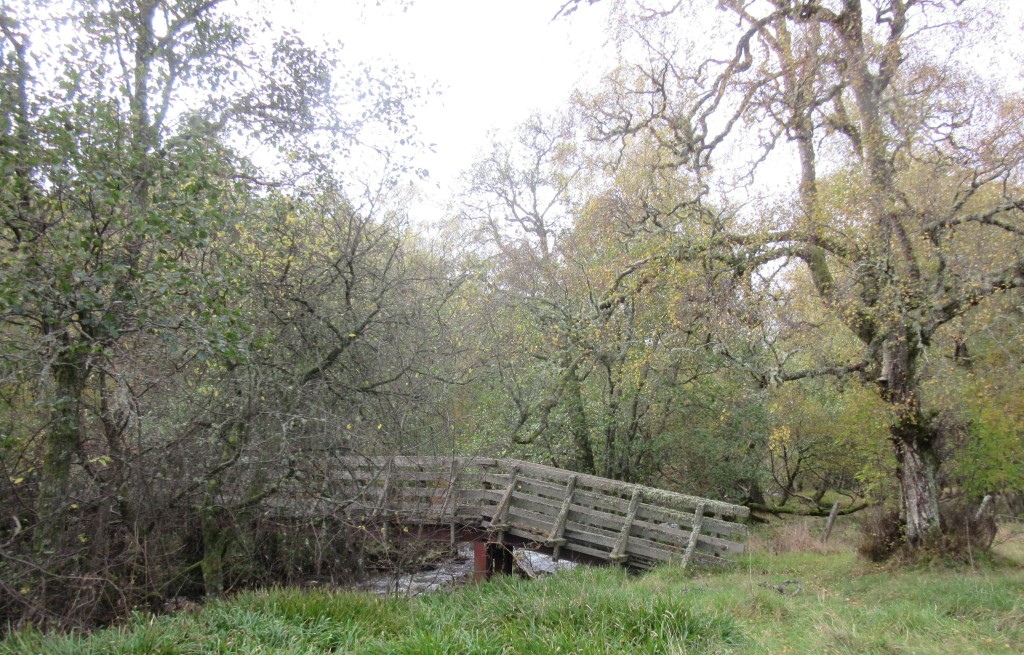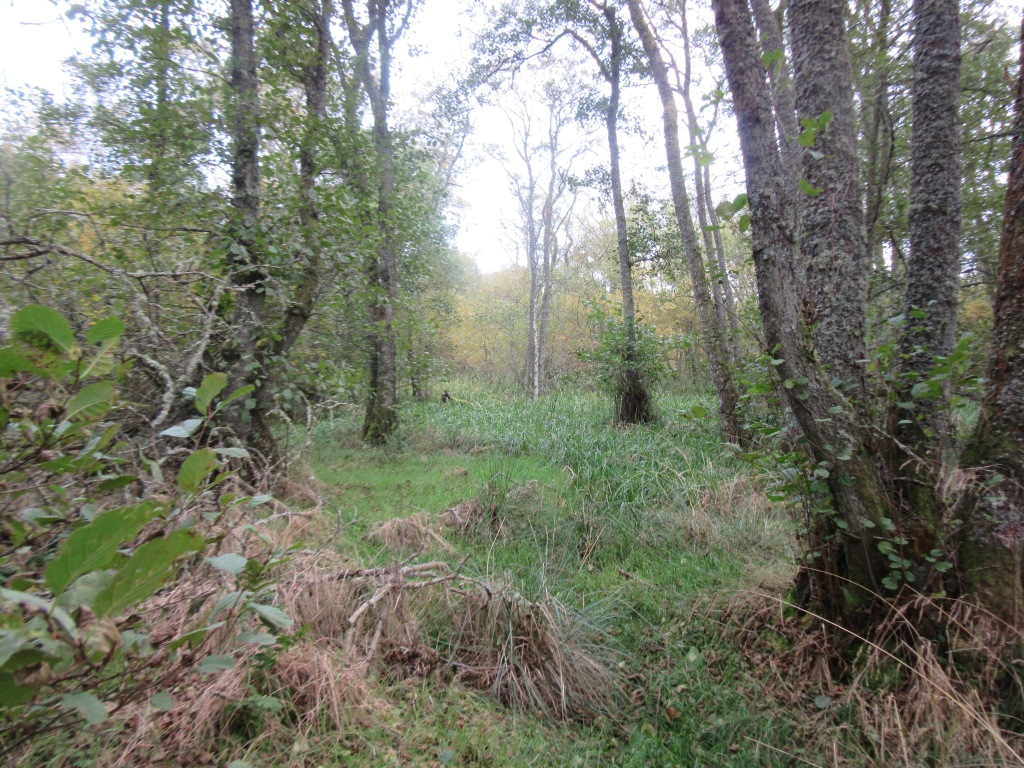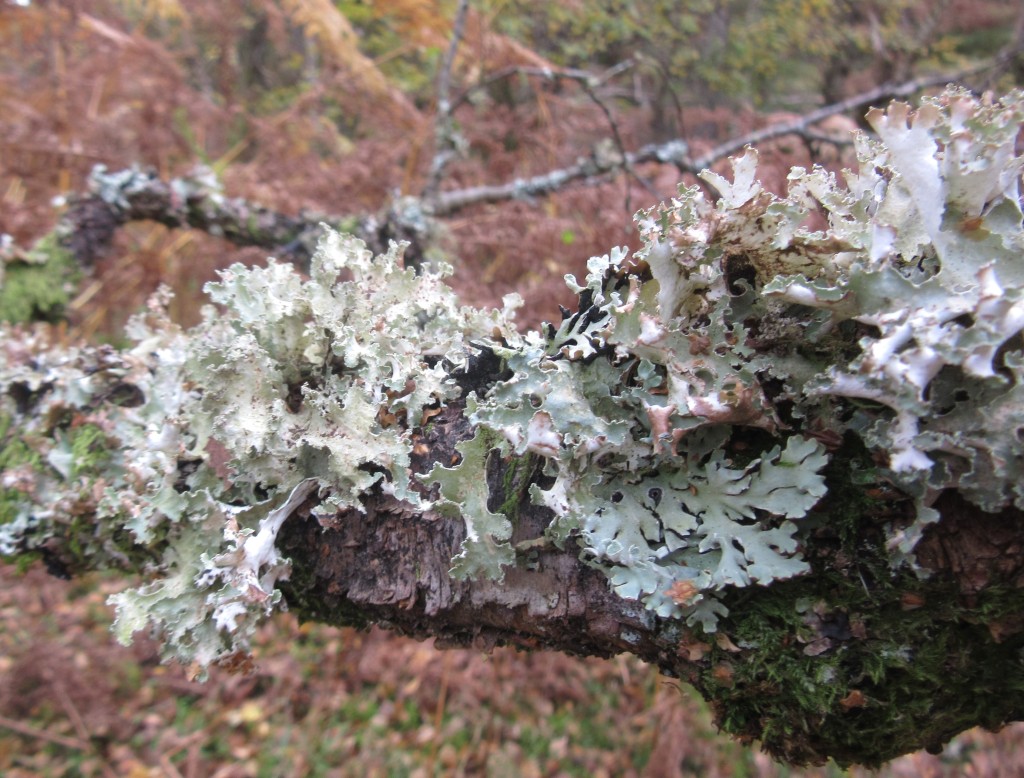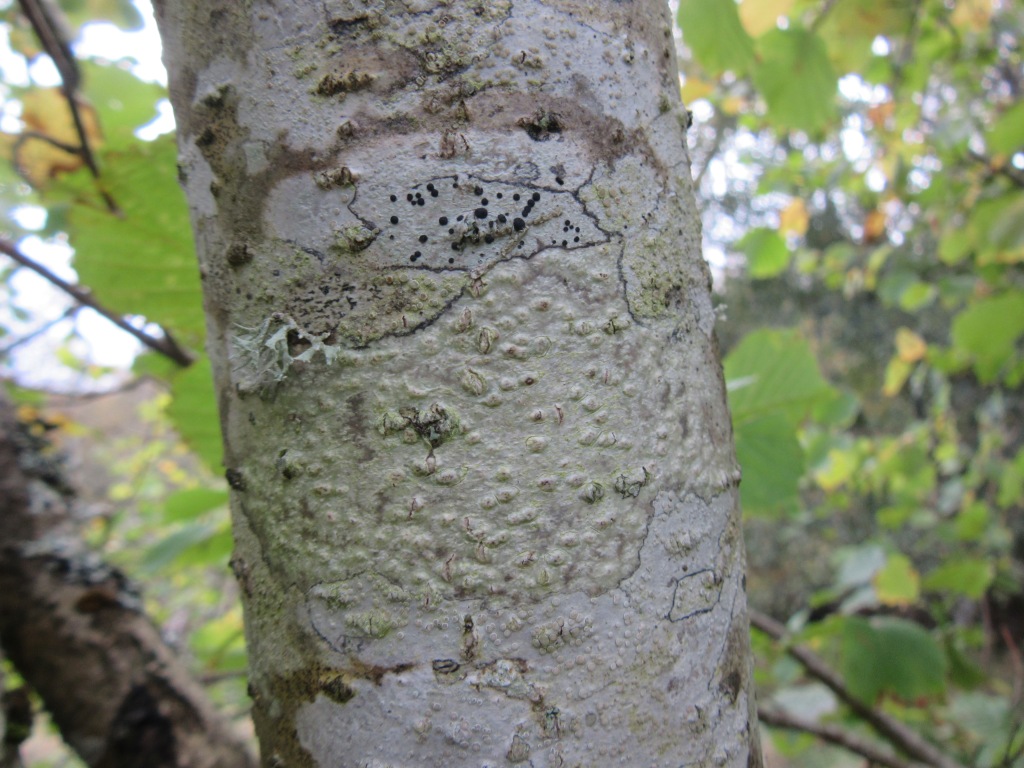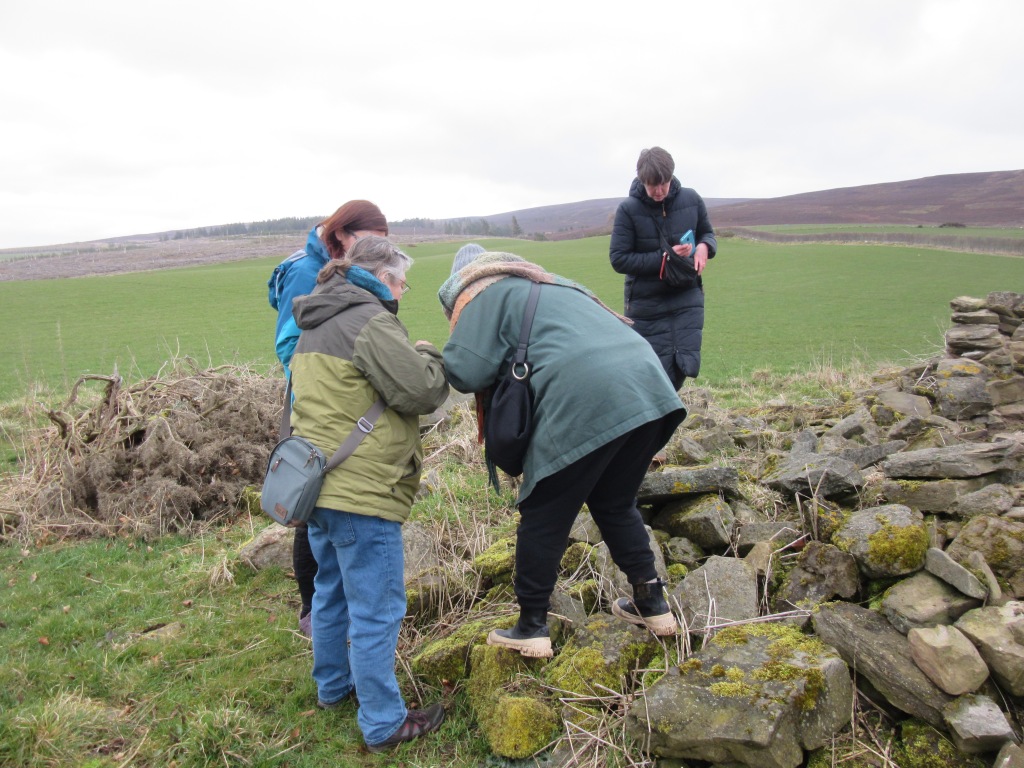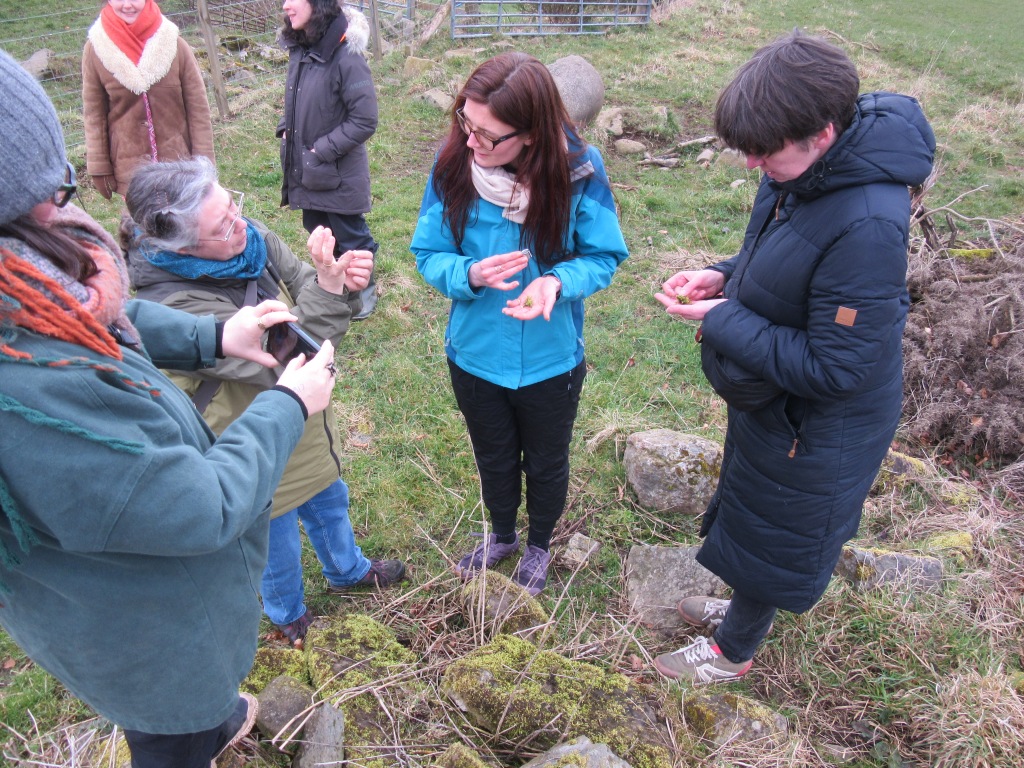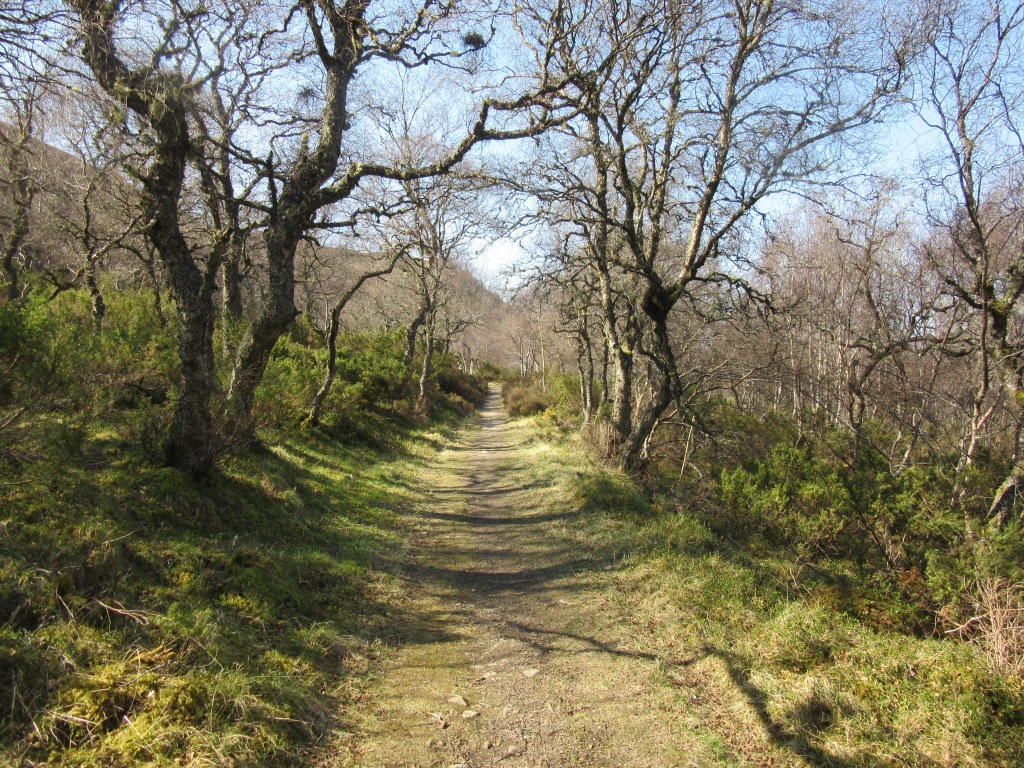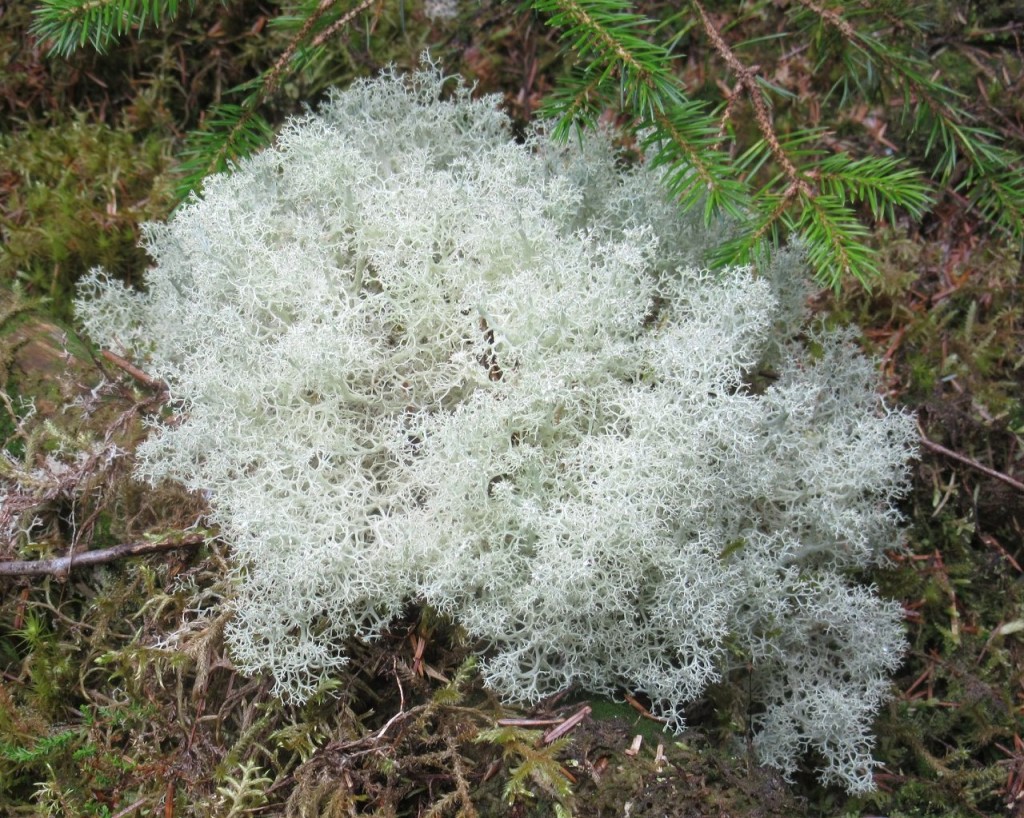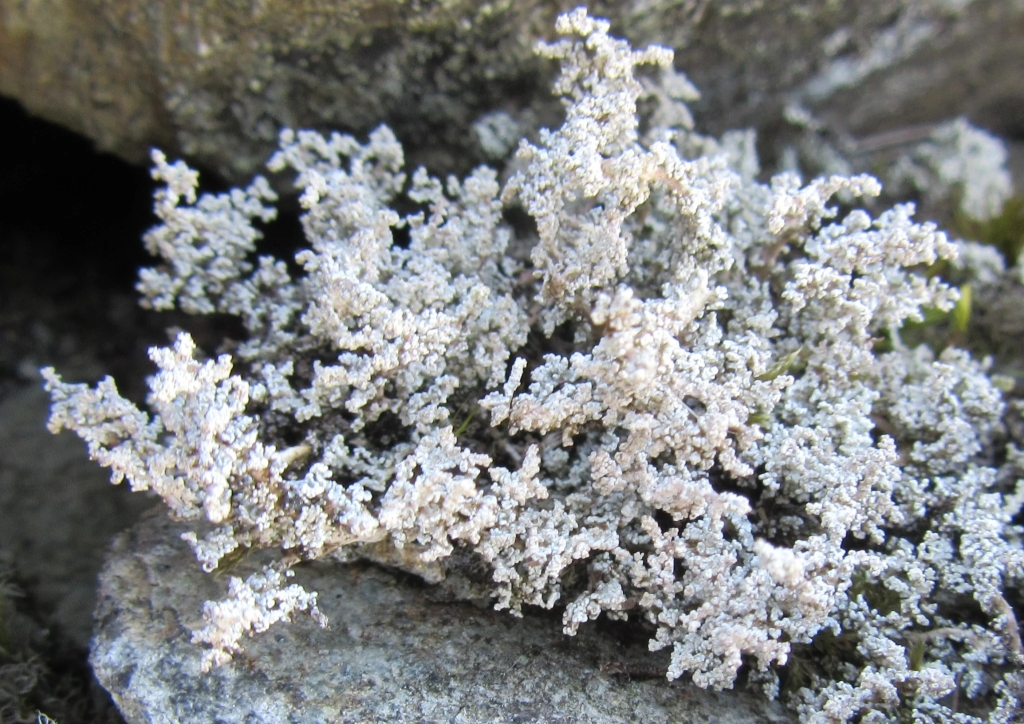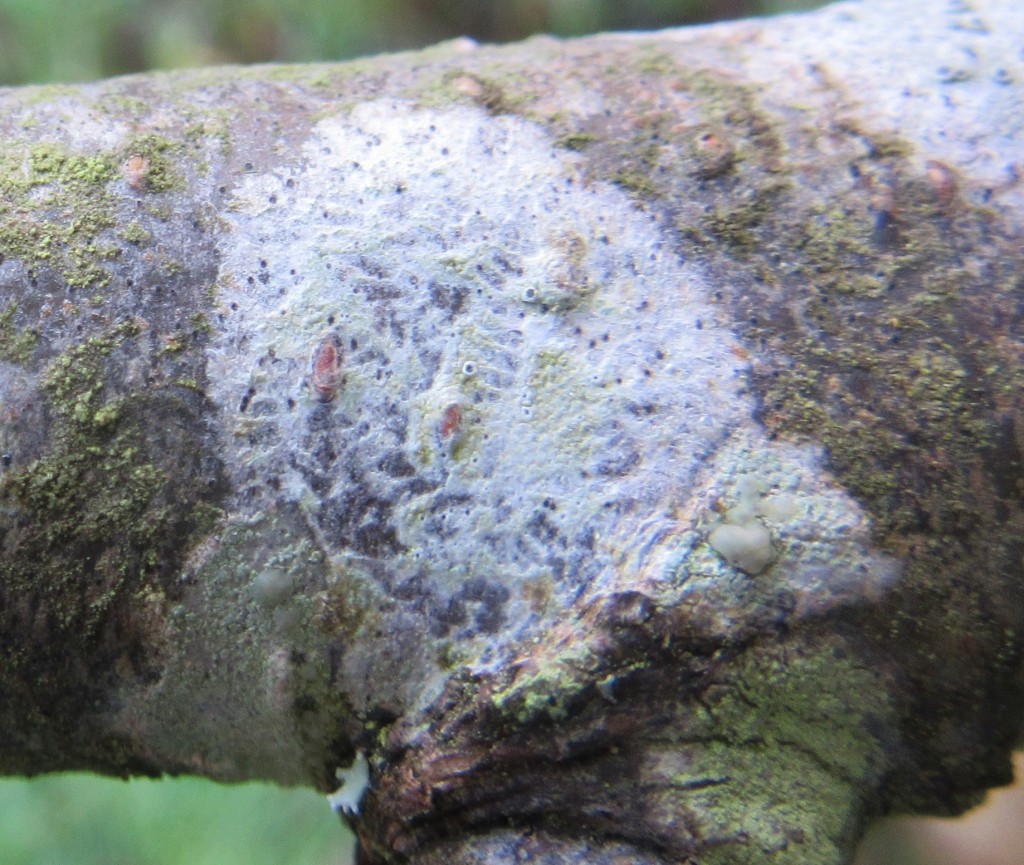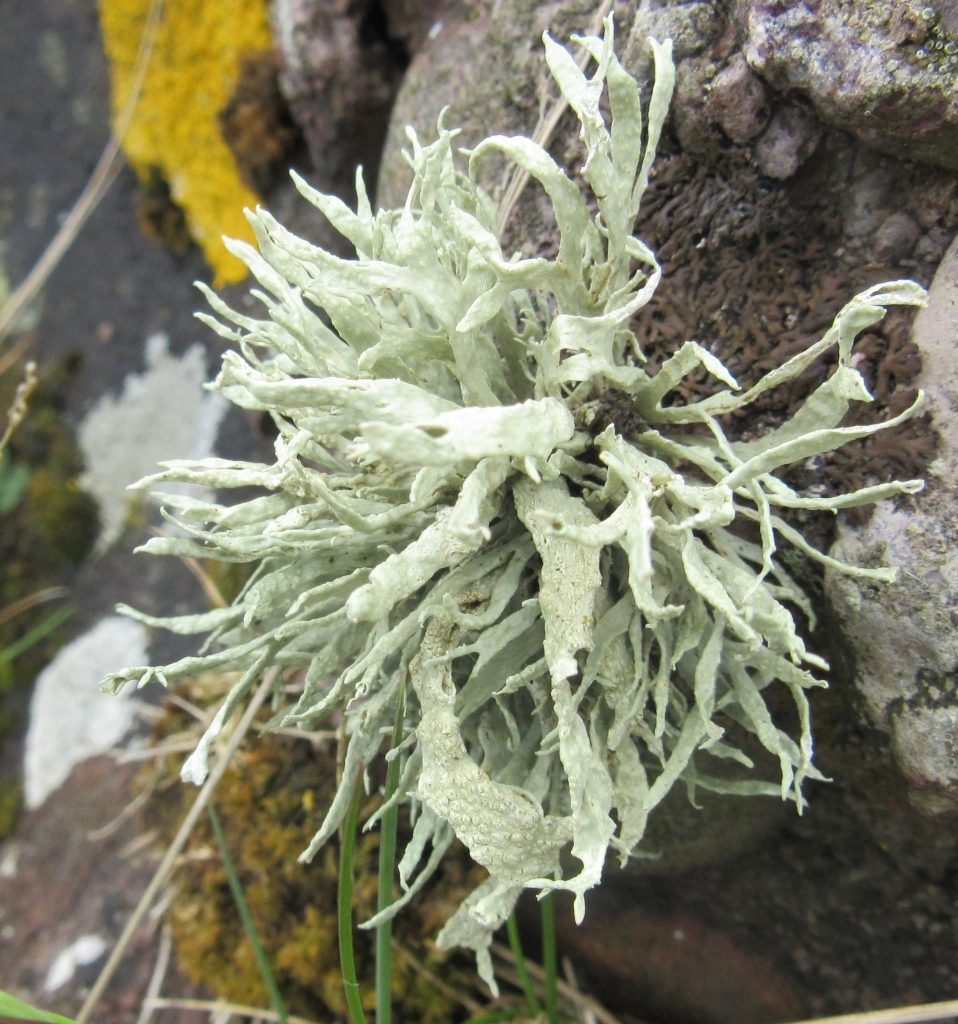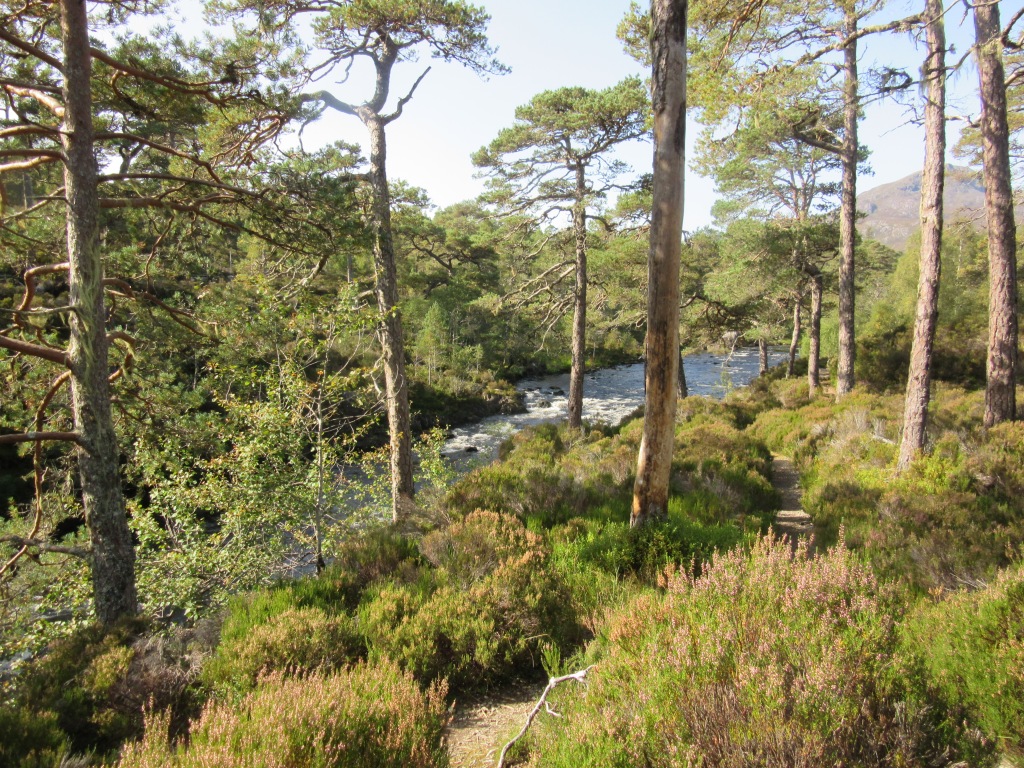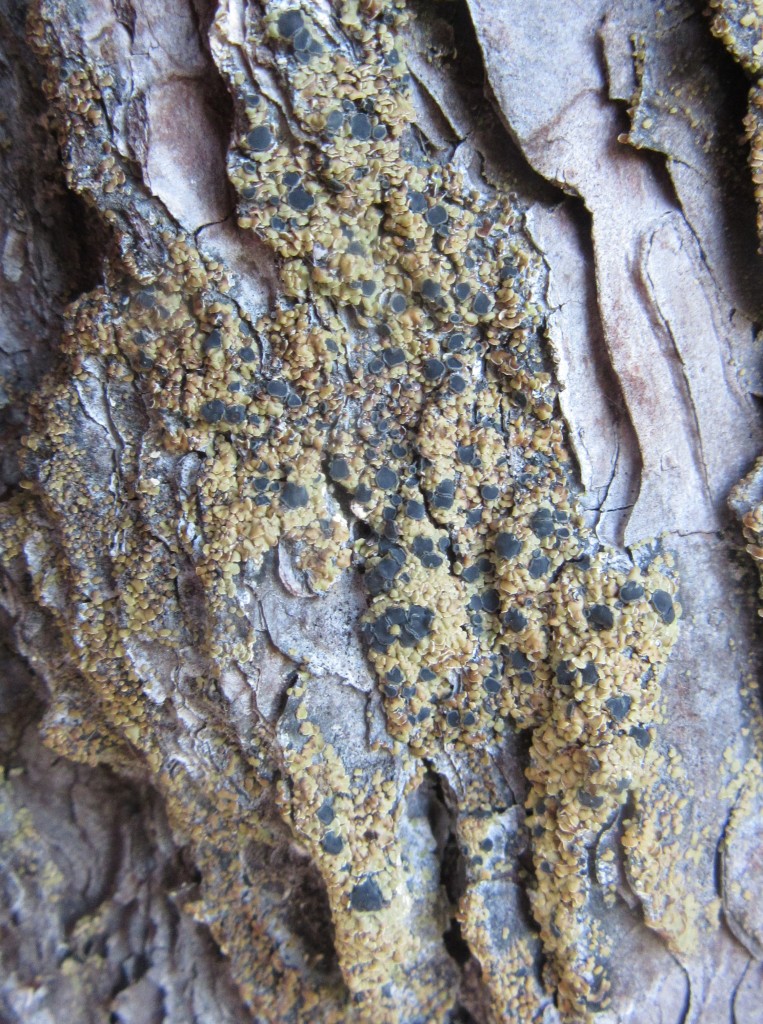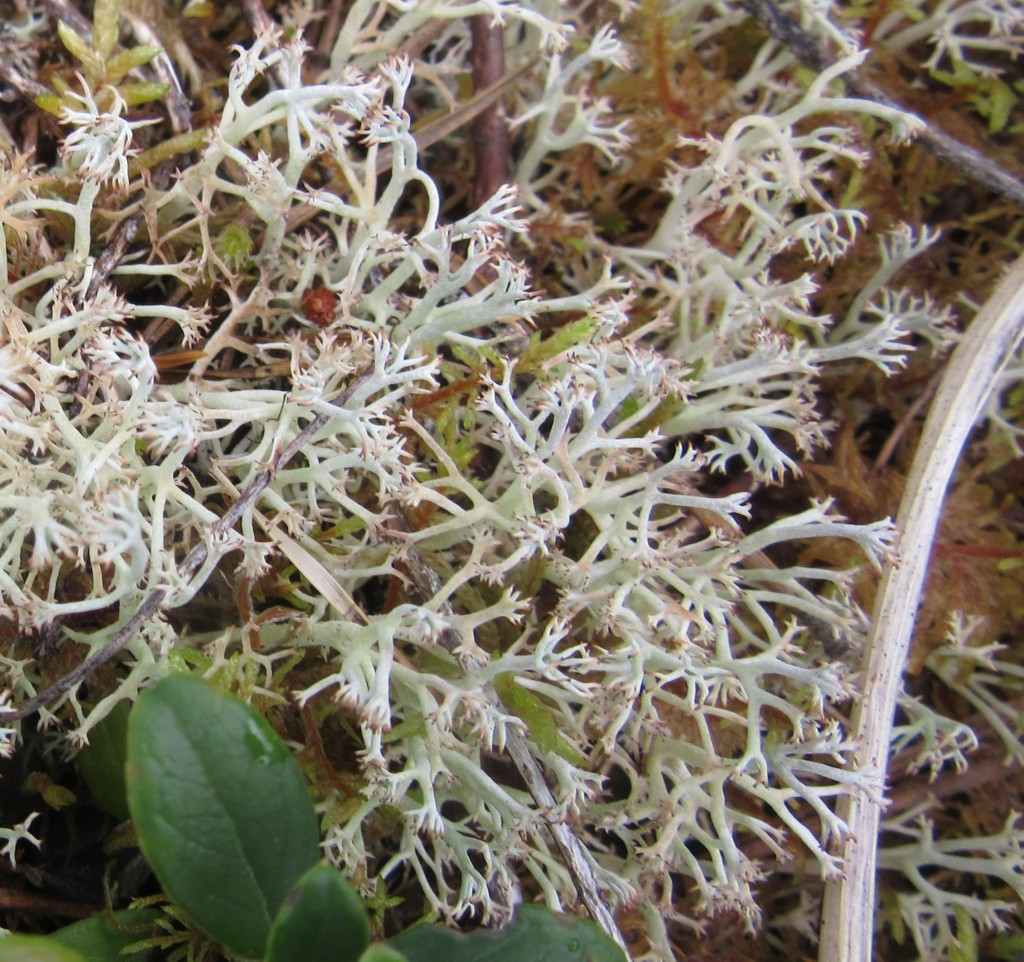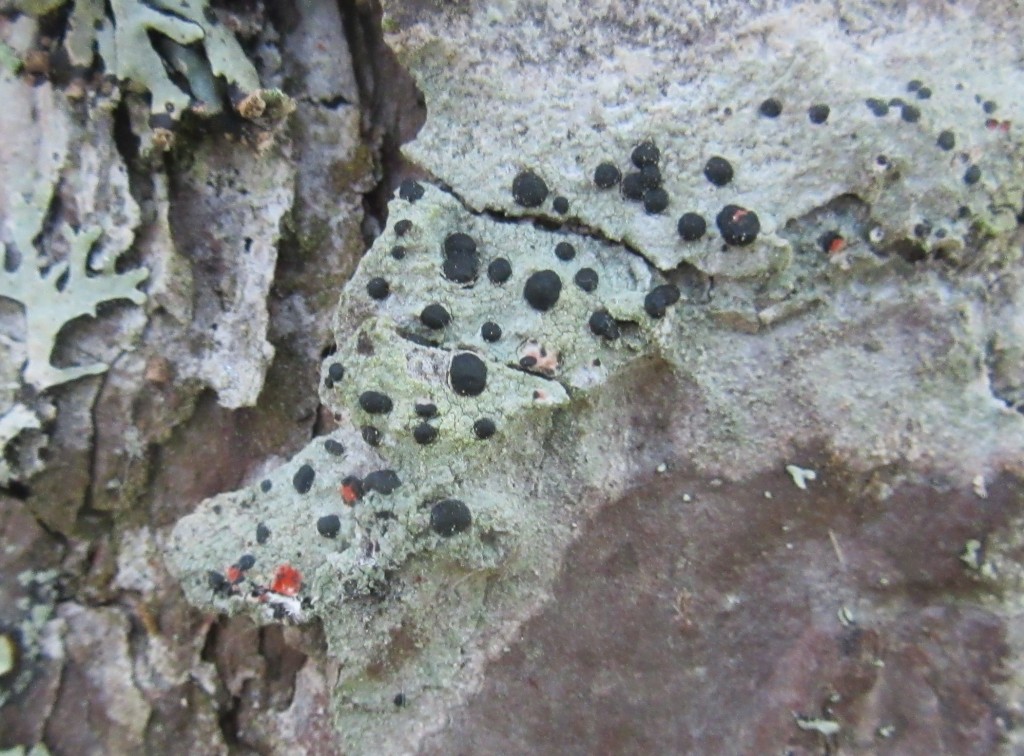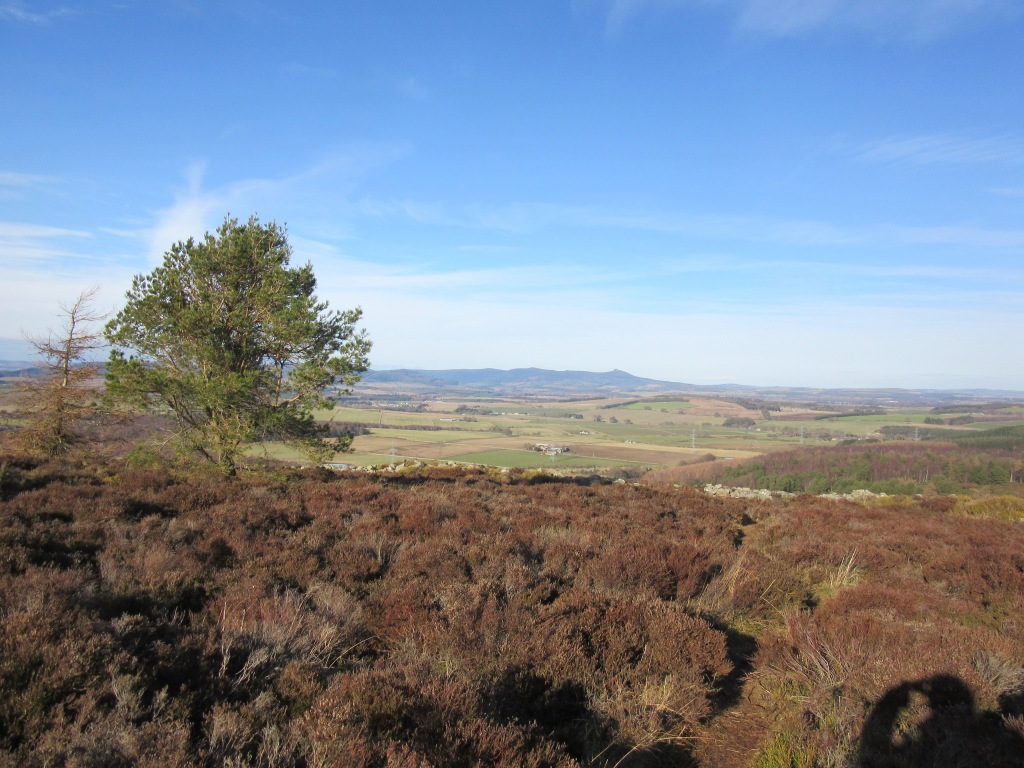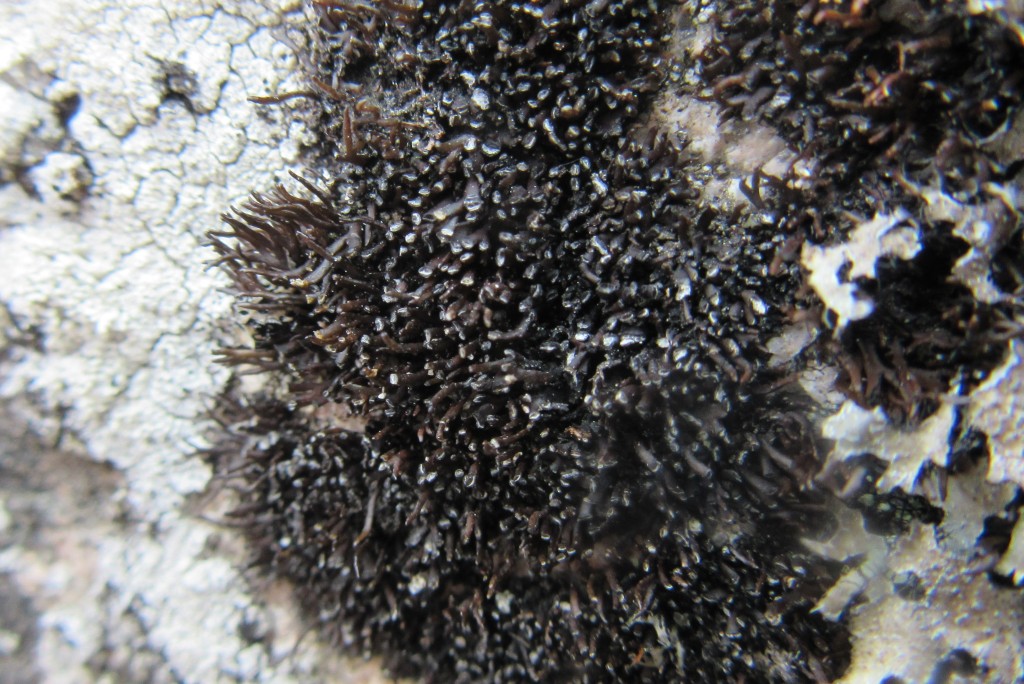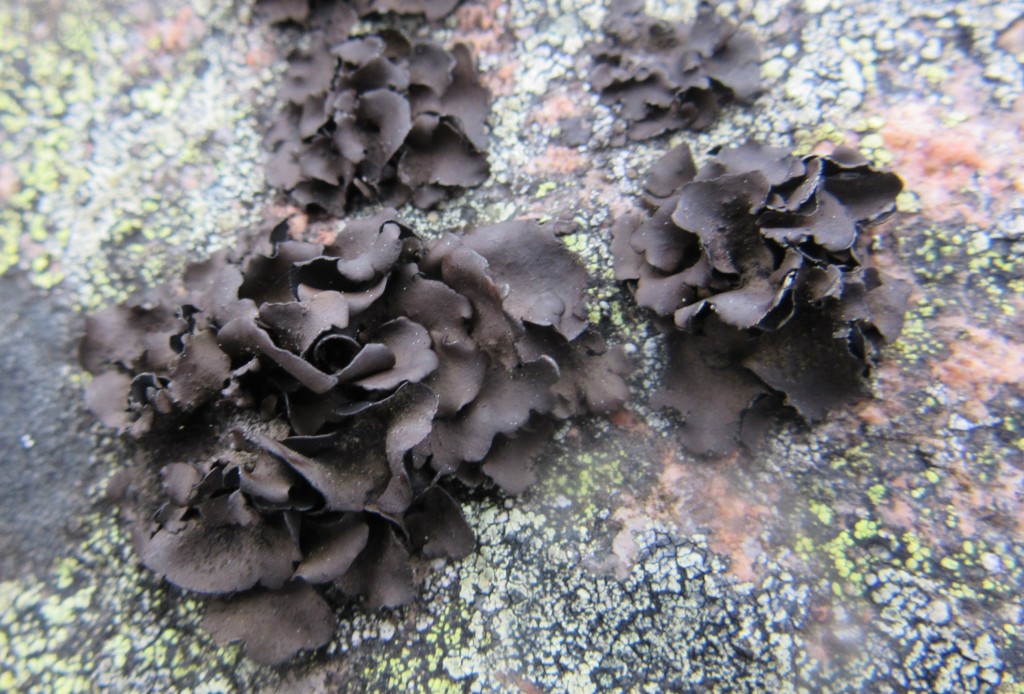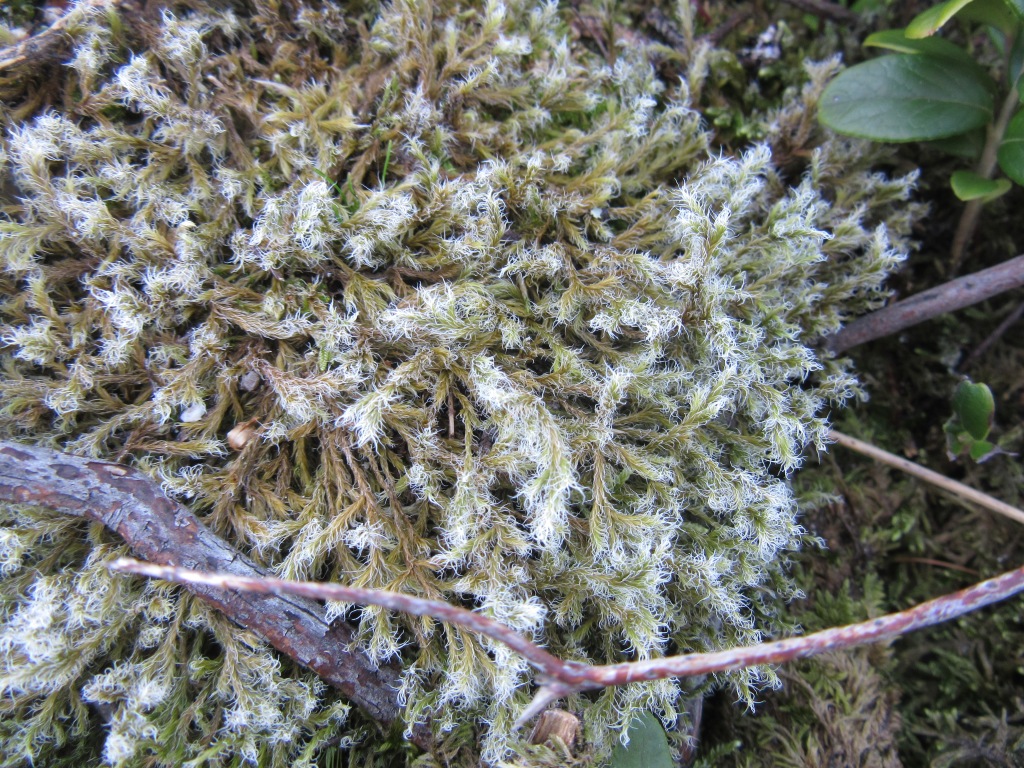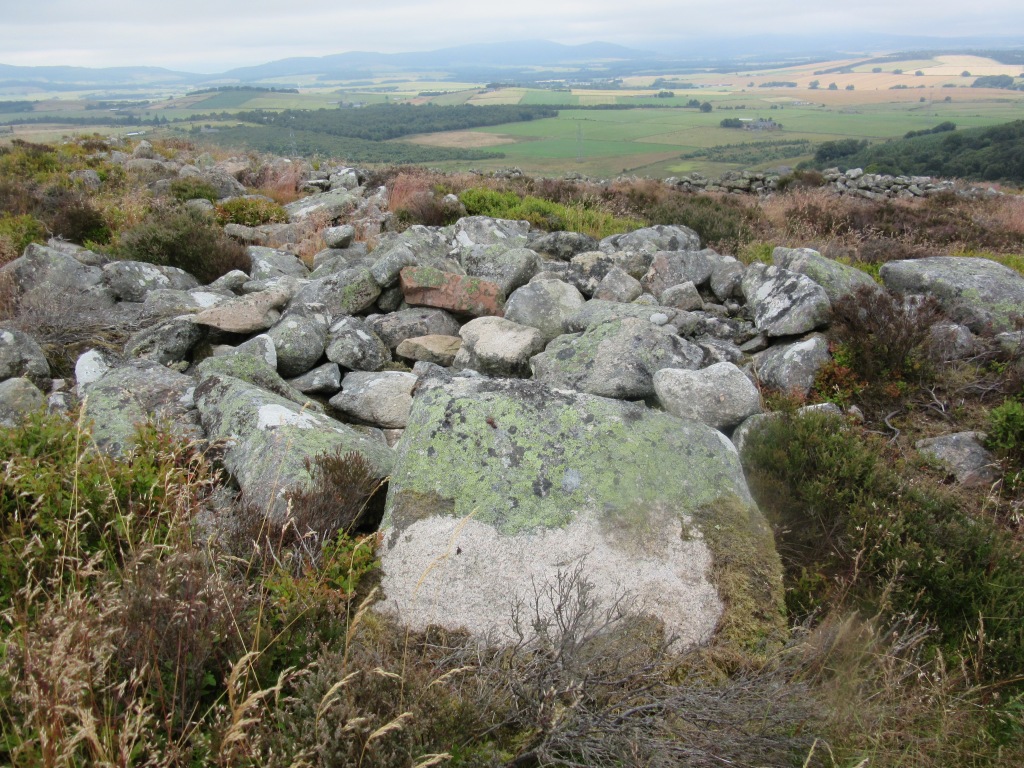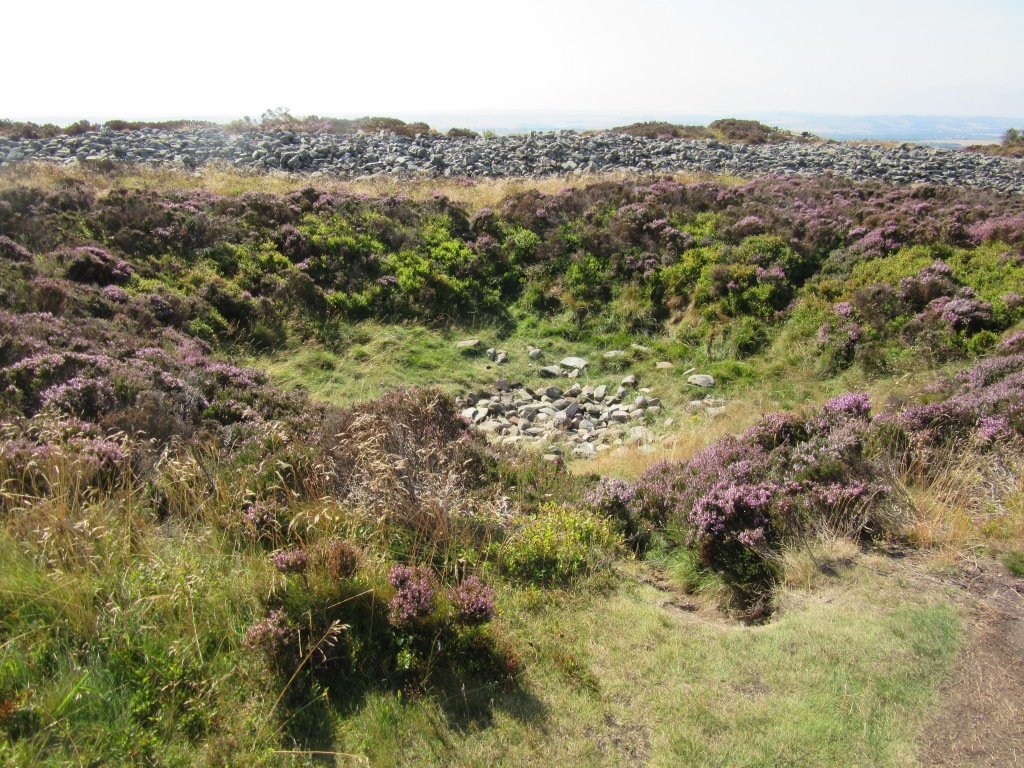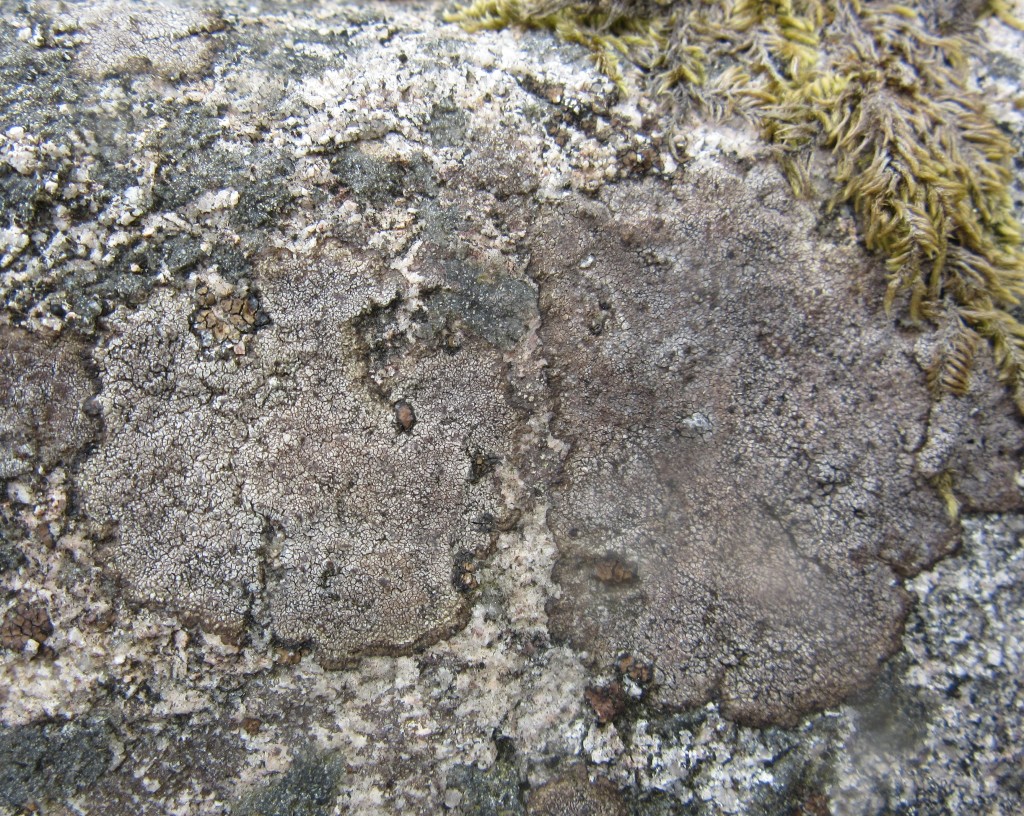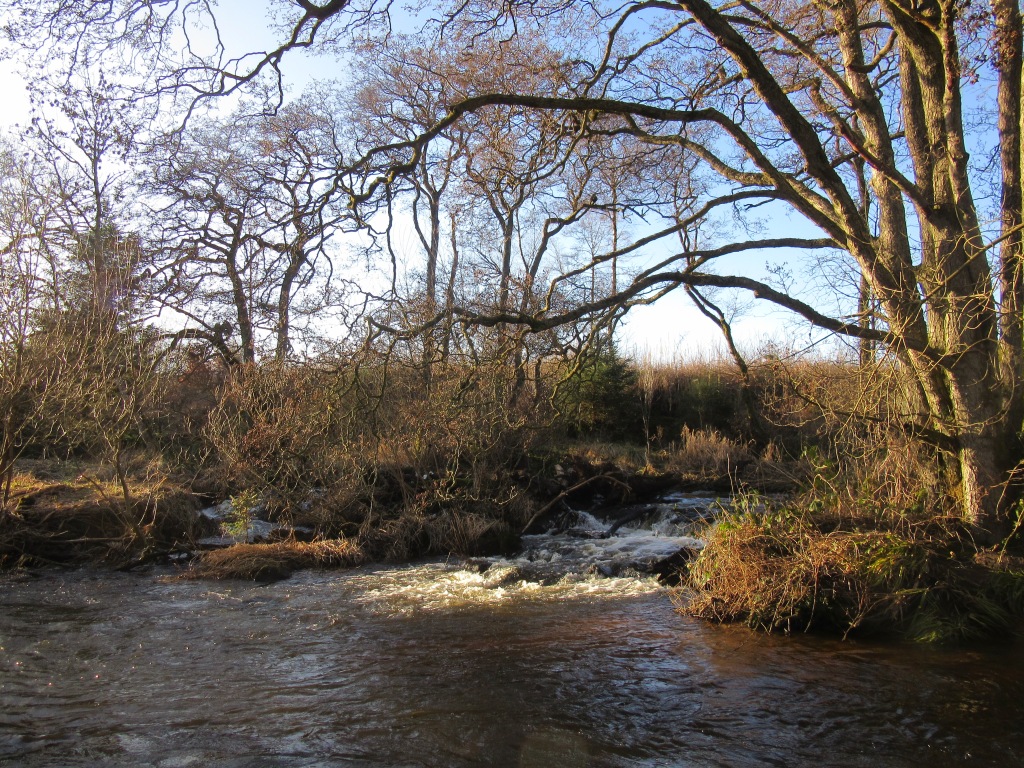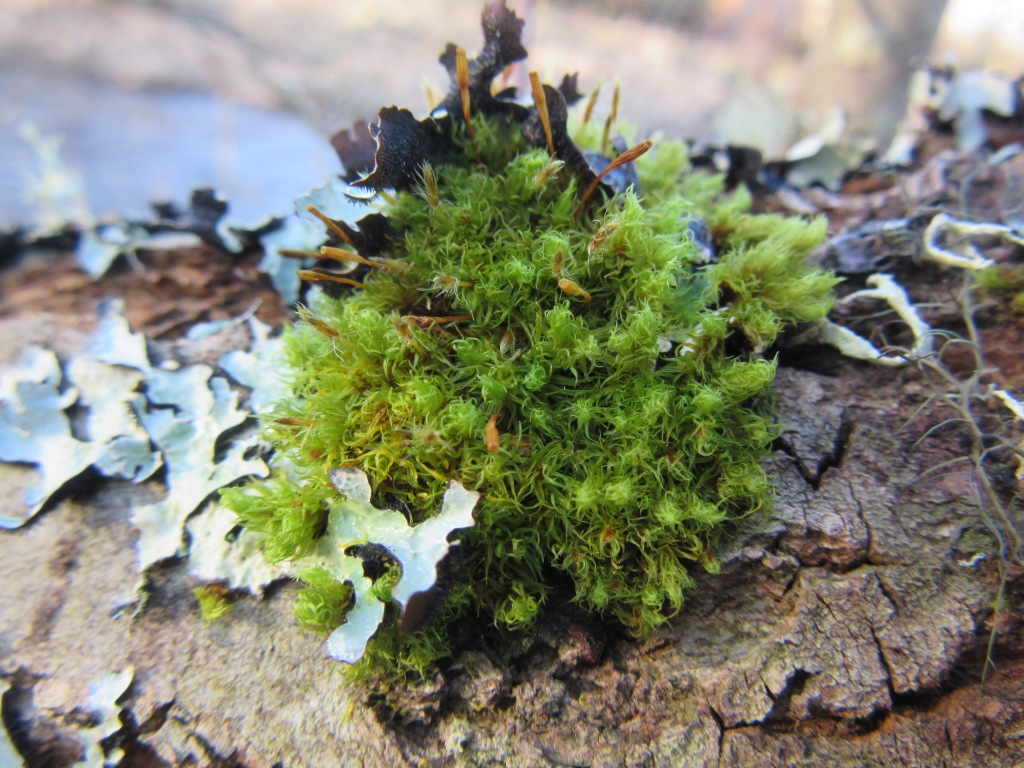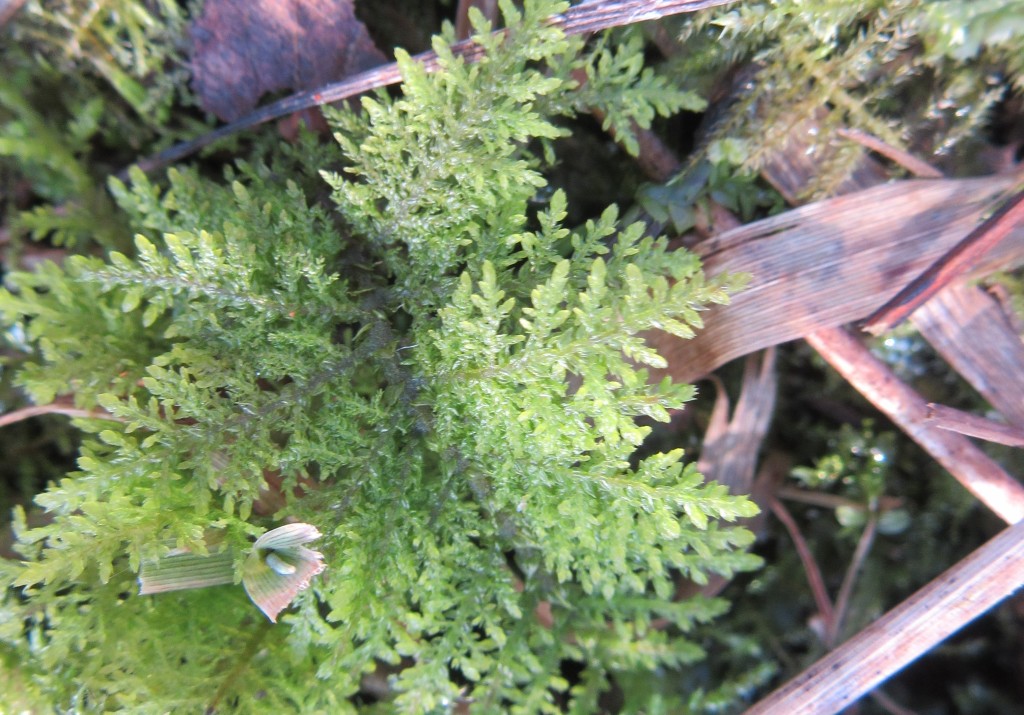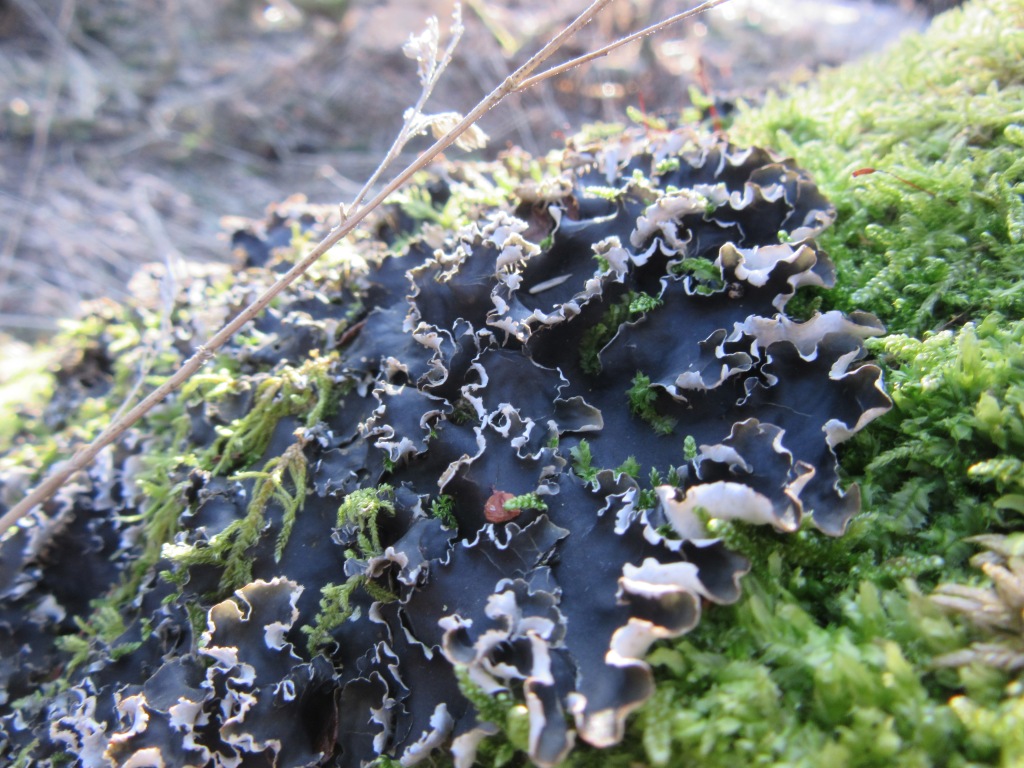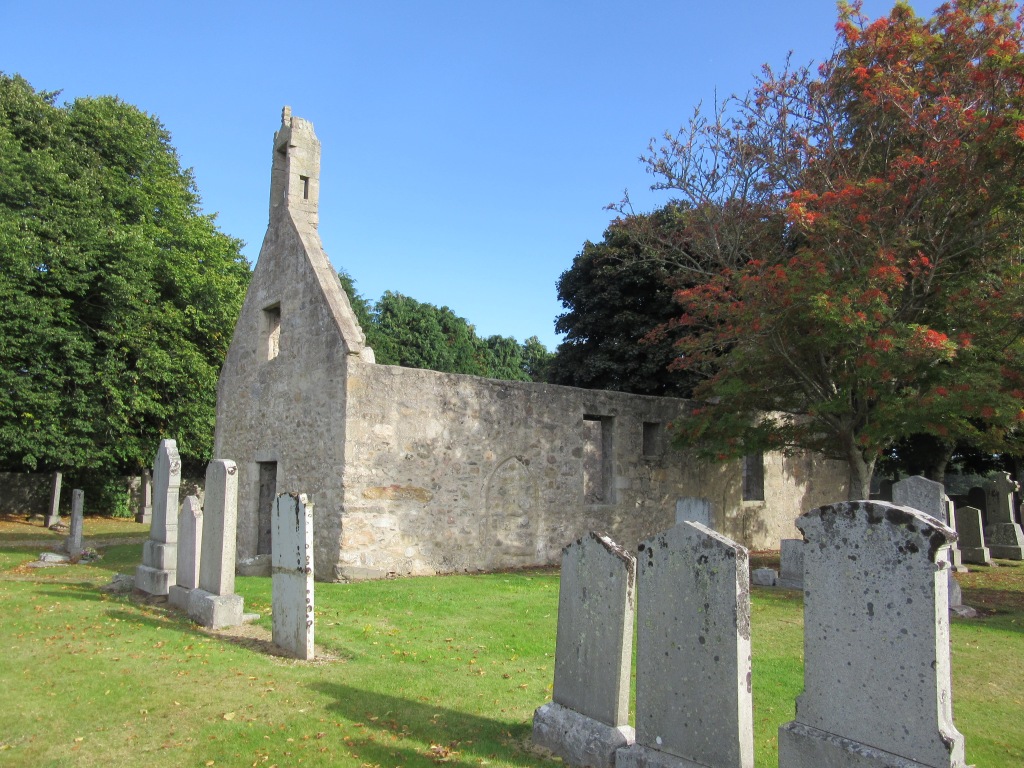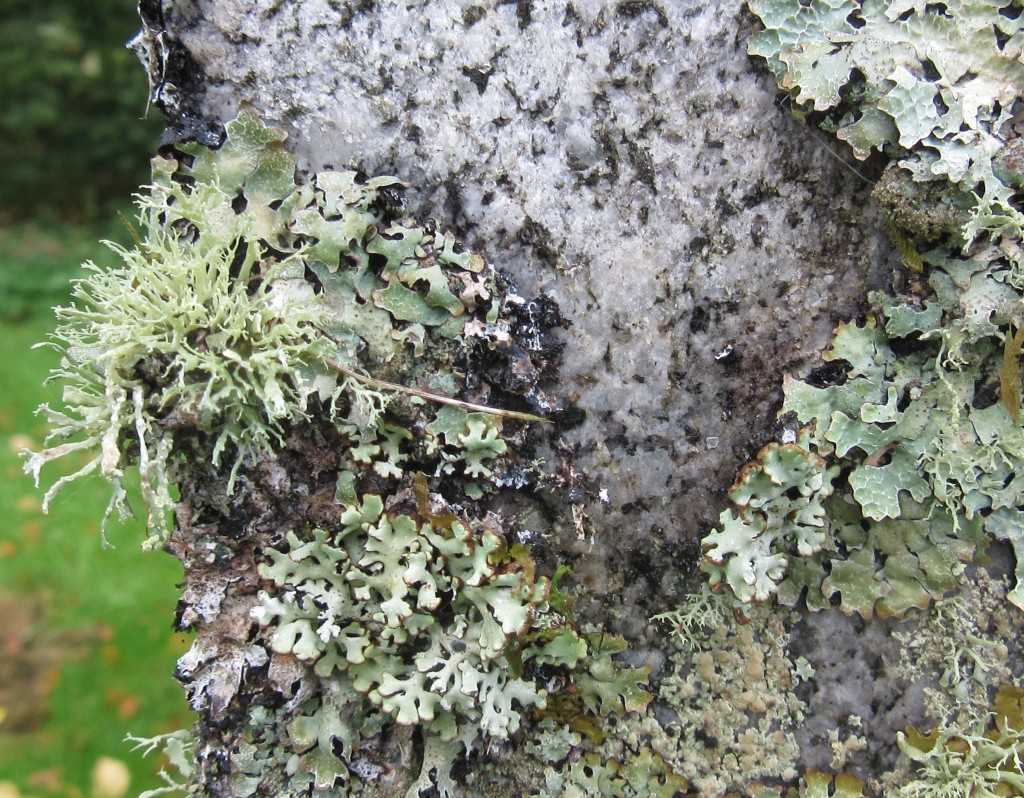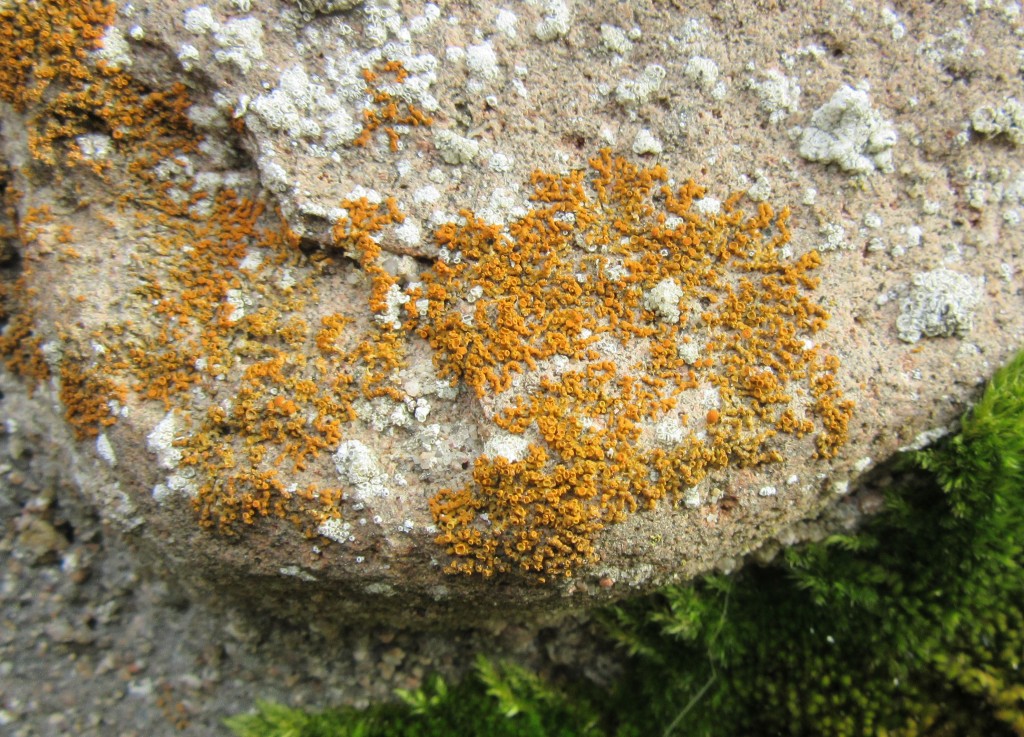
On my way to the old quarry I carefully pick my way through a clearfelling. I don’t know when the last stone was cut, but it must have been a while ago as a mature ash now stands right in the middle of it, and its heavy branches reach as if their twig fingers want to tickle the abandoned rockface. Even though this quarry is within rambling distance from home, I have never taken note of the bryophytes growing here. I am drawn by the sense of semi-permanence this quarry suggests and assume interesting bryophytes have made it their home. Now wondering why I thought I could reach the quarry in trainers rather than boots, I position my feet carefully between stumps and a mismatch of twigs and branches that hide holes. The bluish leaves of climbing corydalis have already softened this harsh clearfelling environment. Only a few years ago I stood here at a copse of wild garlic whose flowers had been a honeypot for hoverflies. This is a wood of opposites. Whereas I was after the bryophytes associated with semi-permanent rock faces, I was now treading through a recently felled plantation where the newly bared soil and removal of canopy shade had made it possible for the green mats of the disturbance moss Campylopus pyriformis to gain a foothold.

The contrast of this plantation felling with the natural pine woodlands around The Vat at Muir of Dinnet NNR could not be bigger. Winding my way through these I am sided by a continuous rather than interrupted mat of mosses that cushion the forest floor. I quickly pick out the usual suspects. The weft-forming Hylocomium splendens and Hylocomiadelphus triquetrus (formerly Rhytidiadelphus triquetrus) have a competitive edge and will quickly overgrow any smaller species. Away from the path, where the forest floor is much less disturbed, the foliage of these species forms and almost continuous carpet. Even though, one has to look carefully to find any sporophytes on these species. The Campylopus pyriformis that I had found on the clearfelling did not have any sporophytes either, but was entirely covered in branchlets, and each of these deciduous shoots would have the ability to start a new clump of moss somewhere close to the parent moss.

But even in the most stable forest wind will snap and uproot trees. Before the big storms two years ago eventually fell most trees, the wind had already uprooted some of the conifers at the plantations of Scolty near Banchory. I would often stop to have a look at these uprooted trees, intrigued by how the islets of bared soil and waterfilled pits quickly become colonised by species such as Atrichum undulatum, Dicranella heteromalla, Polytrichastrum formosum and Pogonatum aloides.
In the pinewoods at Muir of Dinnet NNR mossy logs show that some of the pine trees must, in the past, have experienced a similar fate as I find several logs with a lush covering of species like Hylocomiadelphus triquetrus, Dicranum scoparium, Hypnum cupressiforme and Pleurozium schreberi. In her book Gathering Moss, the American bryologist and writer Robin Wall Kimmerer describes how, between the competitive weft-forming species on such logs, she would find pockets of the much smaller moss Tetraphis pellucida, a species that is also widespread in Scotland. She found that this species tended to prefer the flanks of the logs where brown rot fungi had caused the wood to crumble, in turn creating new spaces for the species to colonise. Whereas many lichen species are able to reproduce through both spores and vegetative propagules like isidia and soredia, this phenomenon is much rarer in bryophytes. What she found, however, was that when space was available nearby, the moss Tetraphis pellucida would produce gemmae to fill these gaps. Gemmae are vegetative propagules that are relatively heavy and usually disperse no more than a few inches from the parent plant. When, on the other hand, all space was occupied this moss would produce sporophytes that could be carried on the wind to a new log some distance away.
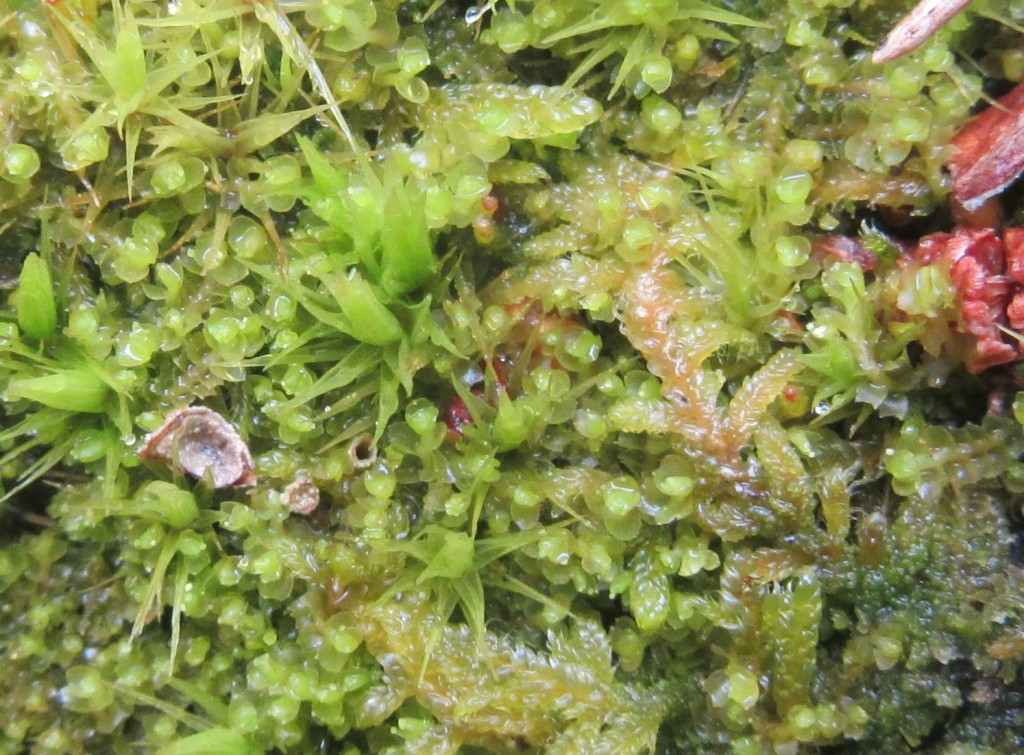
Whereas Tetraphis pellucida was able to make a choice between sexual and asexual reproduction dependent on whether or not space was available locally for it to colonise, the reproductive effort of Hylocomium splendens and Hylocomiadelphus triquetrus on the forest floor at Muir of Dinnet appeared limited. The Dutch bryologist Heinjo During was among the first to recognise the link between the reproductive effort of bryophyte species and the durability of the niche these species would occupy. Distinguishing the potential life span of bryophytes, their overall reproductive effort and the quantity and size of the spores they produced, he discerned dominant life history strategies of bryophytes, and argued that those species with a short life span and high reproductive effort were likely to occupy disturbed habitats, while those species that live for many years and have a low reproductive effort are likely to occupy more stable niches. Robin Wall Kimmerer ‘s argument is about dispersal distance rather than niche stability, and I am not aware whether Heinjo During himself addresses asexual reproduction as part of his life strategies. The phletophera of deciduous shoots on the Campylopus pyriformis on the clearfelling can, however, be seen as a response to disturbance of the forest floor that would need to be colonised rapidly before competing species, such as the climbing corydalis would settle in. In contrast, the forest floor in the pinewoods of Muir of Dinnet NNR has not seen such disturbance and the weft-forming mosses found there are likely to be perennial stayers.
In conversations, I often refer to myself as an ecologist rather than a lichenologist or bryologist as I feel that that reflects that I am driven by a quest to understand the ecology of those species groups rather than a pursuit of extensive species lists and finding that one rare species. And whether it be lichens or mosses and liverworts, each of these species groups allows me to develop an intimate understanding of the forest environment from a different perspective. In this way, the reproductive and life history strategies of bryophytes allow me to appreciate the forest as a layering of niches that are more – or less – durable. And I like it when, back home, I go through my species lists and realise that I not only have records to submit to a biological record centre, but also a repository of associated stories that add depth to my understanding of forest ecology.
If you are interested in learning more about the ecology of mosses and liverwort you are welcome to join me on one of the following guided walks and training events:
- 4 February 2024, Muir of Dinnet NNR, a guided walk organised by Nature Scot (for more information and to sign up: Muir_Dinnet@nature.scot)
- 17 February 2024, Tilliefoure Wood, a guided walk organised by the Bennachie Wildlife Group (for more information and to sign up: environment@bailiesofbennachie.co.uk)
- 20 April 2024, Bennachie Visitor Centre, a one-day course organised by the Field Studies Council (for more information and to sign up: Bryophytes: An Introduction – Field Studies Council (field-studies-council.org))
Copyright text and images Petra Vergunst
